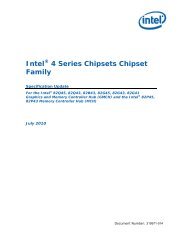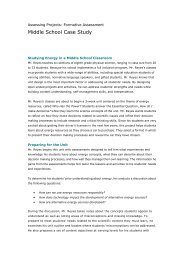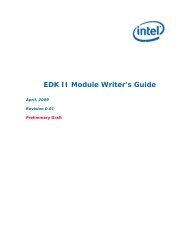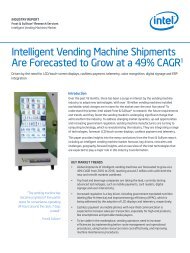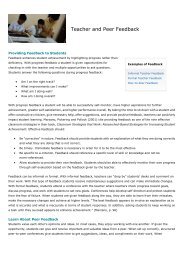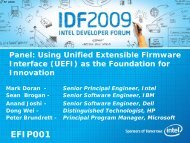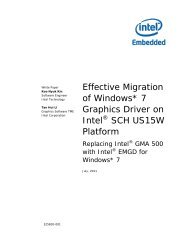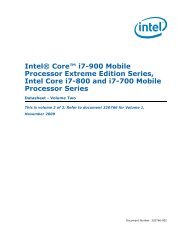Download
Download
Download
- No tags were found...
Create successful ePaper yourself
Turn your PDF publications into a flip-book with our unique Google optimized e-Paper software.
Risk FactorsThe above statements and any others in this document that refer to plans and expectations for the second quarter, the year and thefuture are forward-looking statements that involve a number of risks and uncertainties. Many factors could affect Intel’s actualresults, and variances from Intel’s current expectations regarding such factors could cause actual results to differ materially fromthose expressed in these forward-looking statements. Intel presently considers the following to be the important factors that couldcause actual results to differ materially from the corporation’s expectations. Demand could be different from Intel's expectations dueto factors including changes in business and economic conditions; customer acceptance of Intel’s and competitors’ products; changesin customer order patterns including order cancellations; and changes in the level of inventory at customers. Intel operates inintensely competitive industries that are characterized by a high percentage of costs that are fixed or difficult to reduce in the shortterm and product demand that is highly variable and difficult to forecast. Additionally, Intel is in the process of transitioning to itsnext generation of products on 32nm process technology, and there could be execution issues associated with these changes,including product defects and errata along with lower than anticipated manufacturing yields. Revenue and the gross marginpercentage are affected by the timing of new Intel product introductions and the demand for and market acceptance of Intel'sproducts; actions taken by Intel's competitors, including product offerings and introductions, marketing programs and pricingpressures and Intel’s response to such actions; defects or disruptions in the supply of materials or resources; and Intel’s ability torespond quickly to technological developments and to incorporate new features into its products. The gross margin percentage couldvary significantly from expectations based on changes in revenue levels; product mix and pricing; start-up costs, including costsassociated with the new 32nm process technology; variations in inventory valuation, including variations related to the timing ofqualifying products for sale; excess or obsolete inventory; manufacturing yields; changes in unit costs; impairments of long-livedassets, including manufacturing, assembly/test and intangible assets; the timing and execution of the manufacturing ramp andassociated costs; and capacity utilization. Expenses, particularly certain marketing and compensation expenses, as well asrestructuring and asset impairment charges, vary depending on the level of demand for Intel's products and the level of revenue andprofits. The majority of our non-marketable equity investment portfolio balance is concentrated in the flash memory market segment,and declines in this market segment or changes in management’s plans with respect to our investment in this market segment couldresult in significant impairment charges, impacting restructuring charges as well as gains/losses on equity investments and interestand other. Intel's results could be impacted by adverse economic, social, political and physical/infrastructure conditions in countrieswhere Intel, its customers or its suppliers operate, including military conflict and other security risks, natural disasters, infrastructuredisruptions, health concerns and fluctuations in currency exchange rates. Intel’s results could be affected by the timing of closing ofacquisitions and divestitures. Intel's results could be affected by adverse effects associated with product defects and errata(deviations from published specifications), and by litigation or regulatory matters involving intellectual property, stockholder,consumer, antitrust and other issues, such as the litigation and regulatory matters described in Intel's SEC reports. An unfavorableruling could include monetary damages or an injunction prohibiting us from manufacturing or selling one or more products,precluding particular business practices, impacting our ability to design our products, or requiring other remedies such as compulsorylicensing of intellectual property. A detailed discussion of these and other factors that could affect Intel’s results is included in Intel’sSEC filings, including the report on Form 10-Q for the quarter ended March 27, 2010.Rev. 5/7/1027




